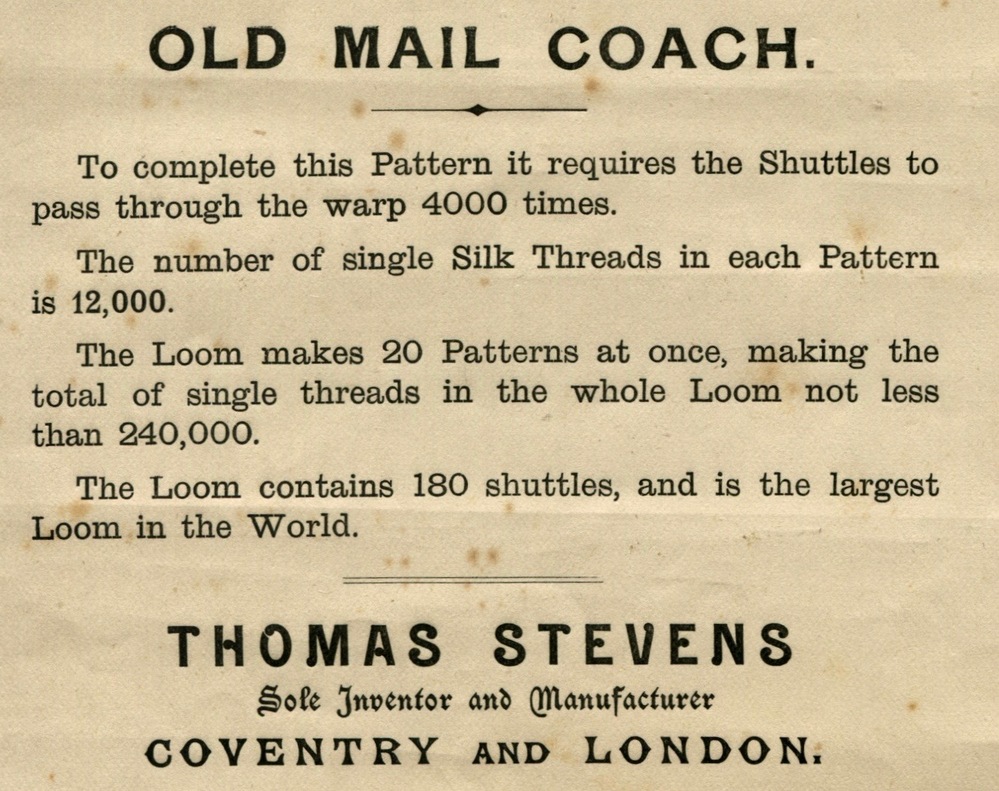Joseph Marie Charles Jacquard (1752-1834) was credited with inventing the first mechanised weaving loom. However, the term ‘Jacquard’ does not refer to a particular loom but an attachment that automates the pattern of the weaving. The image design was stored in a series of punched cards that were linked together to form a continuous chain. The cards programmed the loom to raise some warp threads independently of others allowing designs of great intricacy to be woven.
(The difference between embroidery and weaving: in embroidery the pattern is stitched onto a fabric. In weaving the pattern is woven into the fabric resulting in an intricate high resolution design).
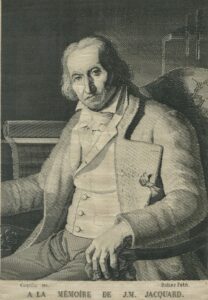
Silk weaving of Jacquard made by Carquillat in St.Etienne, France 1835
Step 1: An artist’s sketch. This was an original design, a copy of a famous painting or even a photograph. It was transcribed onto ruled graph paper with each square representing a different colour in the design, not unlike a tapestry. The copy would be 8-10 times larger than the original sketch. The number of squares in the grid determined the weaving density. Each square then had to be hand coloured. This process would take several weeks.
The image (below) shows the original artist’s sketch for the Stevengraph “Signing of the Declaration of Independence”
(after the painting by John Trumbull (1756-1843) commissioned in 1817 now in the US Capitol rotunda). The pen marks indicate some of the different colours required for the weaving.
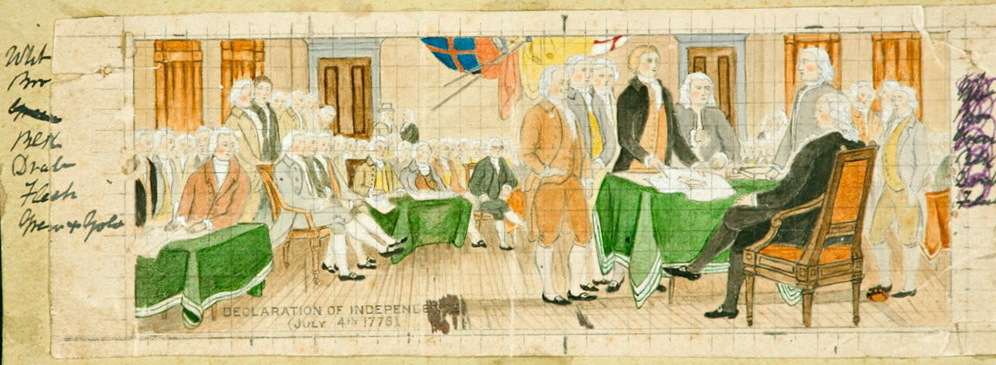
The original artist’s Stevengraph sketch
Step 2: The Card Puncher. Here a skilled operator sits at a punching machine (image below) rather like a piano but with fewer keys. The card puncher reads each line of the now enlarged and coloured graph paper image and by striking keys and using a foot pedal large cards were perforated to represent each colour appearing in every ‘line’ of the picture – a process that took 2-3 months.
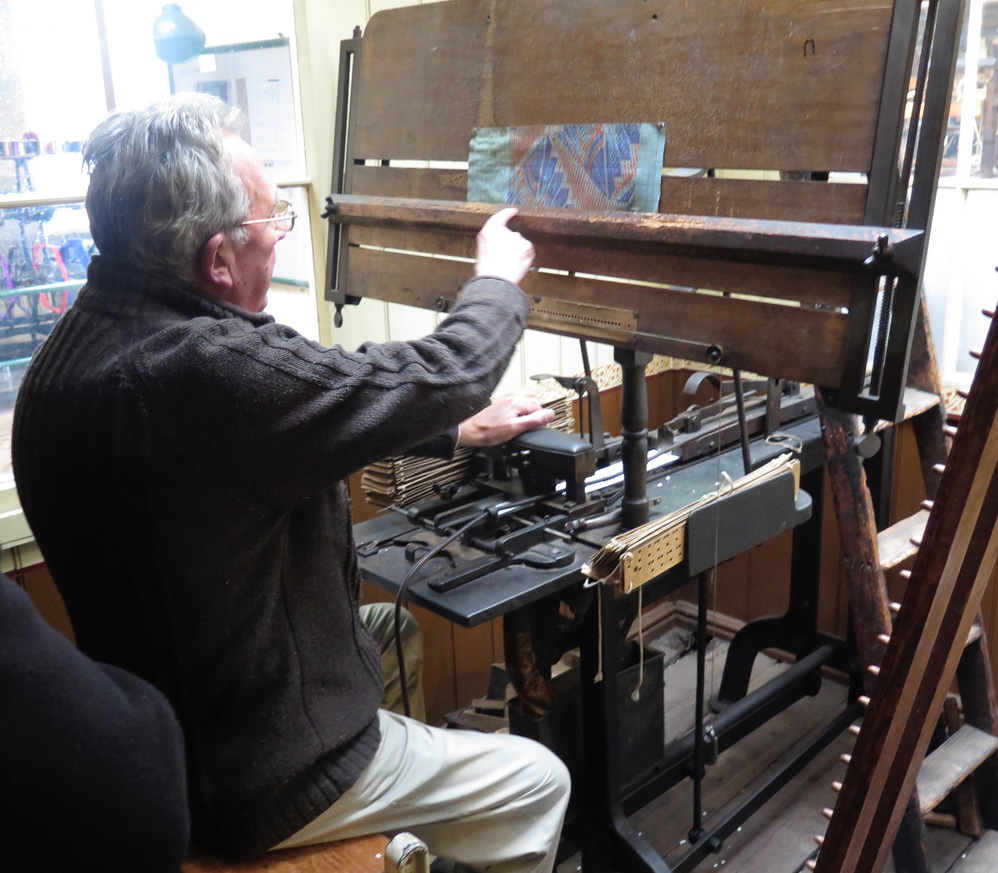
The Card Punching Machine & Operator
The image (below) shows a 1970s J& J Cash weaving of a Robin on the enlarged graph paper and the finished product. J&J Cash used a rayon/silk mix in this picture which is less intricate than Stevengraphs, Stevens’s bookmarks, postcards and other novelties which were woven in pure silk.
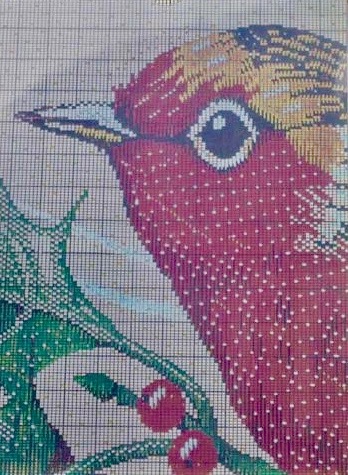
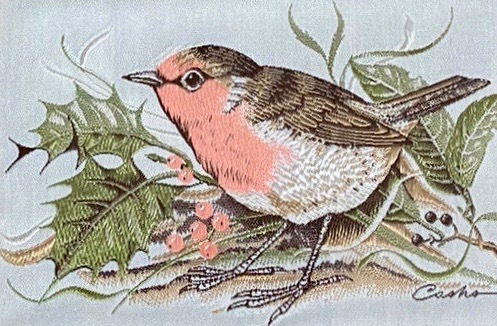
Step 3: The punched cards. The Jacquard loom is considered to be a predecessor of the modern computer as it uses a binary system to store information that can be read by the loom, and repeated. In computer terms the concept is ‘gate open or gate closed’, in a loom it is ‘punched hole or no hole’.
A technical note: A Jacquard loom operator has a set of stretched longitudinal silk threads held stationary under tension (the warp) while the transverse threads (the weft) are drawn across under or over the warp thread. The punched cards direct the loom to pass the weft silk under or over the warp by a series of pins. The cards determine whether the pins are lowered or not.
The cards were numbered and attached to the loom arranged in an endless chain Each time a shuttle crossed the loom a different card came into use, changing the arrangement of the warp threads, and consequently the pattern was woven.When all the cards had been brought into operation, the design was complete and, unless an adjustment was made to the loom, the pattern was then repeated to form a long ribbon. A 13 inch bookmark would require around 5,500 punched cards.
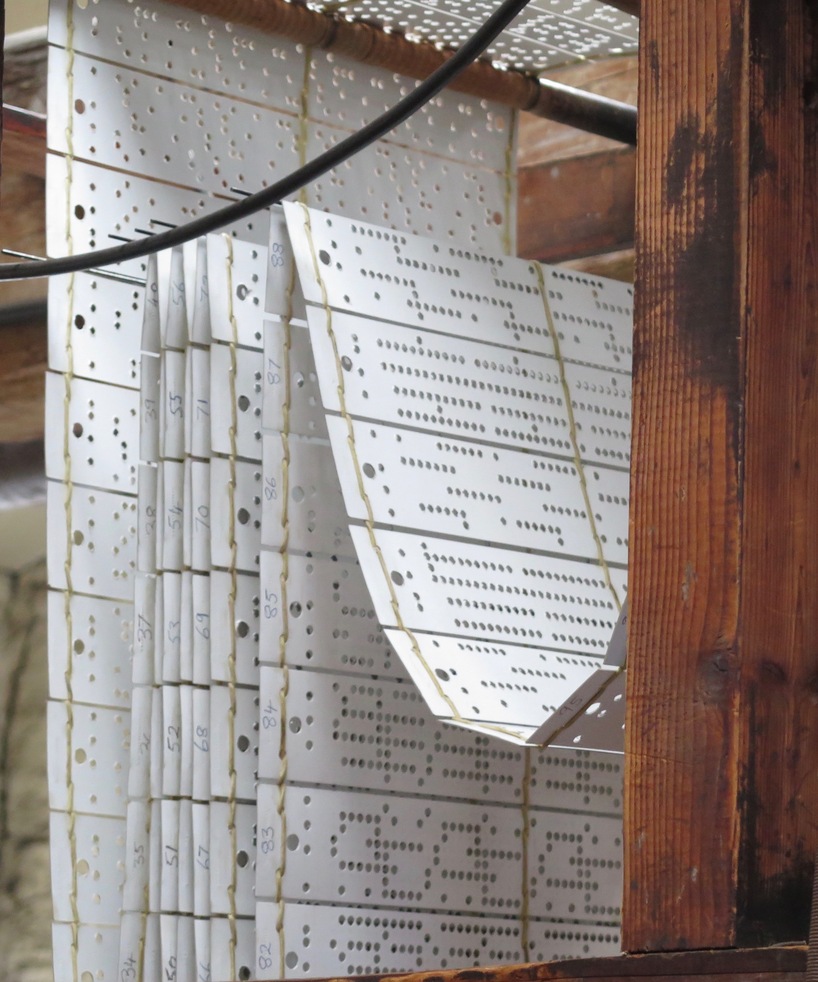
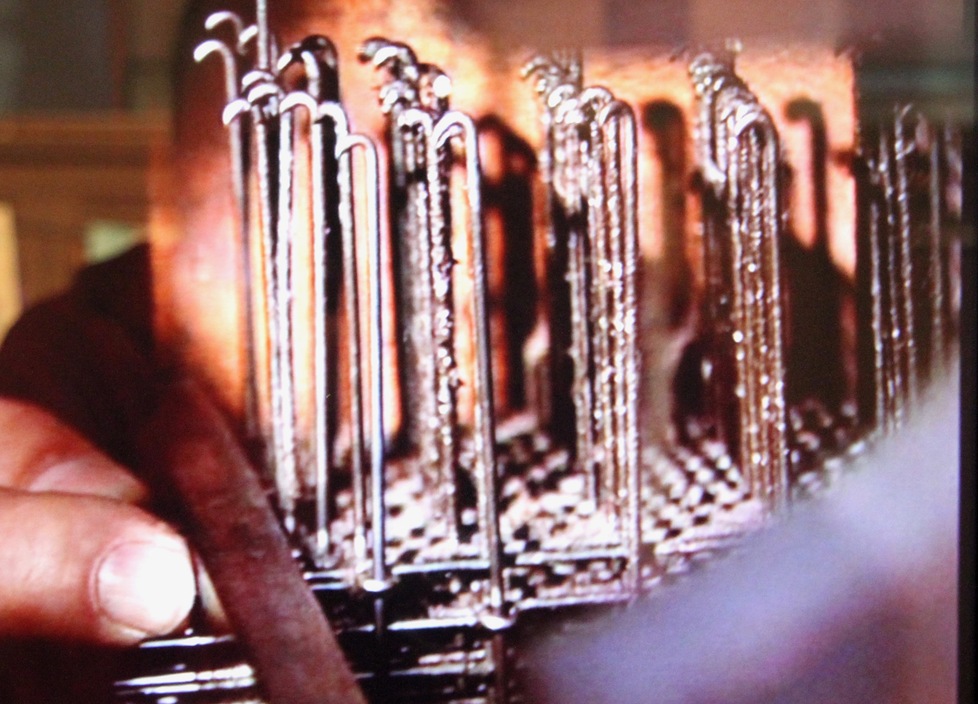
Step 4: The finished weaving. There were spaces between the pictures so the ribbon could be cut and then each picture attached in a printed card mount (Stevengraphs and postcards) or folded and a tassel attached (for bookmarks). An advertisement back label was usually applied to the back.
Stevens made many adaptions to his looms for which he won may prizes but it is not clear what specific changes he made. Previous coloured weavings usually comprised of two or three colours. The introduction of multiple colours, sometimes as many as ten for a single weaving, can only be attributed to Stevens.
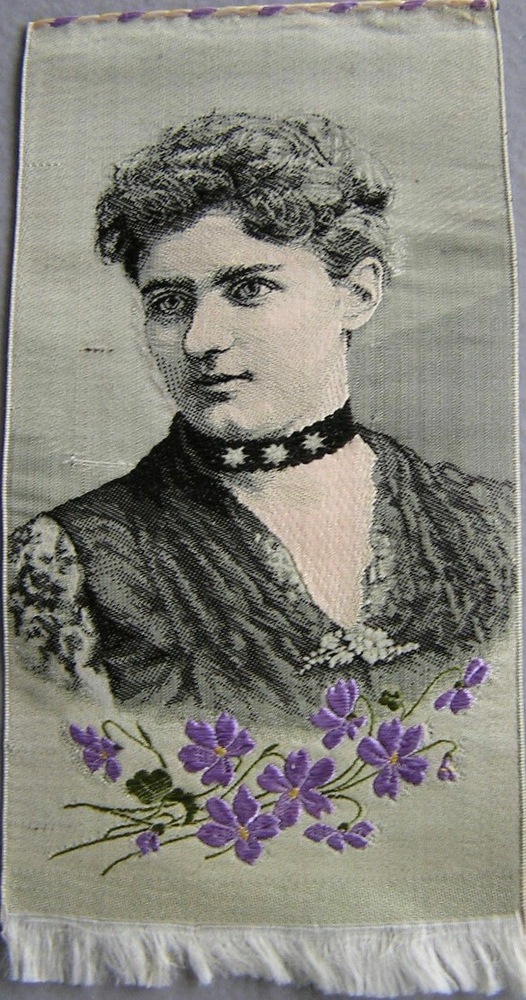
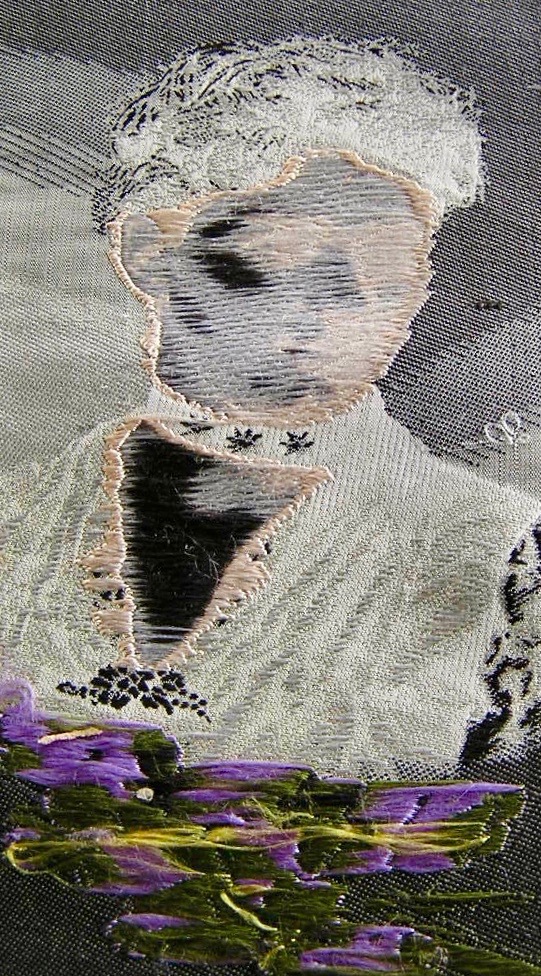
A Stevengraph portrait of Mrs Cleveland showing the front and back (reverse) of the weaving. Note the flesh coloured silk on the back that is not immediately obvious on the front view.
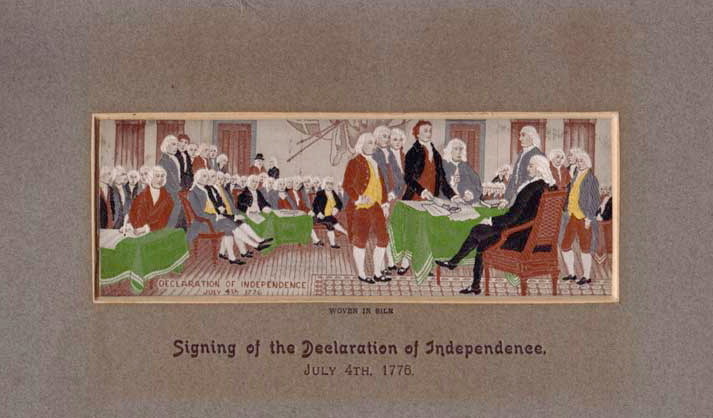
The mounted and finished Stevengraph of the Signing of the Declaration of Independence from the artist sketch in Step 1

The Mail Coach bookmark woven in the 1870s with printed information about the loom used to make it.
